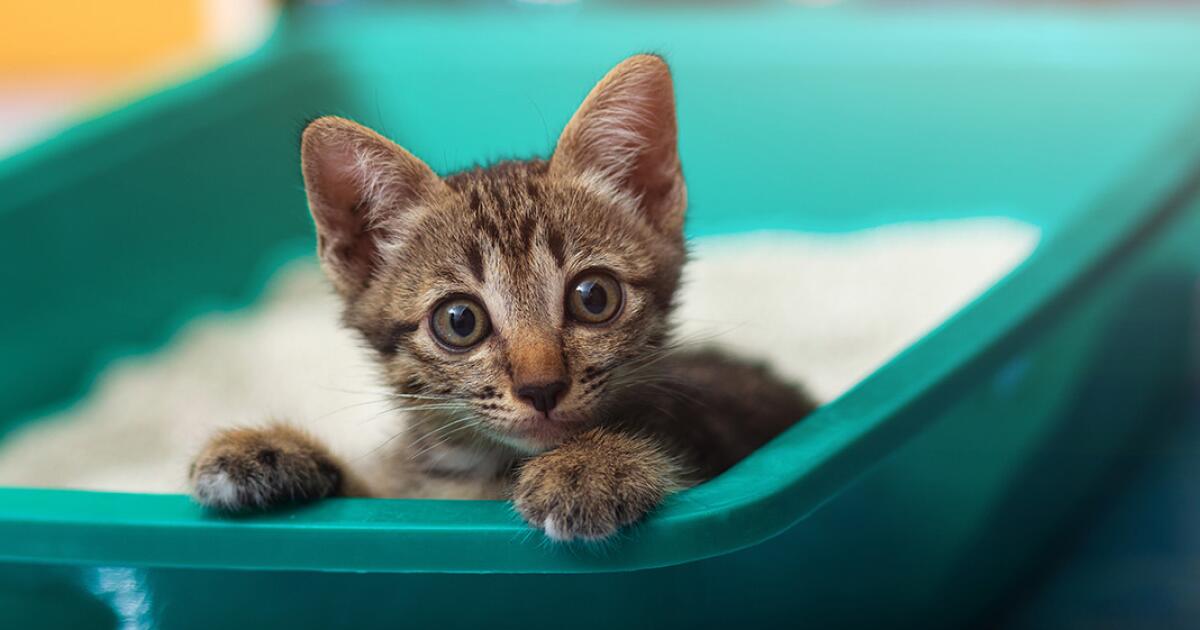Copyright Los Angeles Times

Indoor cats are naturally inclined to use a well-maintained litter box. Most cats are trained by their mothers as kittens, and those who don’t catch on quickly usually learn by imitation. Kittens start using the litter box by their third week of life, following their mothers and copying their bathroom habits. For most adult cats, litter box training involves simply showing them where the new box is. Confining your cat to a small room at first is the best way to foster good litter box habits. However, urinating and defecating outside the litter box—also known as “inappropriate elimination”—is one of the most common reasons cats are surrendered to shelters. The number one cause of this behavior is a dirty litter box. We all find porta-potties disgusting, and cats are expected to walk around in their own waste. Plus, cats have a sense of smell that is much stronger than ours. Imagine how an outdoor cat would handle bathroom duties: he wouldn’t be confined to a tiny 2x2-foot space or forced to walk around in his own waste—he’d simply find a new spot. In most cases of inappropriate elimination, it’s our fault for not properly maintaining the litter box. If your cat continues to make mistakes, this behavior can become a habit. Besides a dirty box, other common reasons include litter box aversion, urine marking, hormonal problems, and medical issues like bladder infections. If your cat suddenly stops using a clean litter box, a thorough veterinary exam should be the first step to rule out any health problems. Bladder infections are common and can cause inappropriate elimination. Tips to Keep Your Cat Happy with Their Litter Box Have as many litter boxes as you have cats, plus one extra. They can be side by side. Place litter boxes in quiet, easily accessible locations like a bathroom or spare bedroom. Avoid noisy or high-traffic areas like laundry rooms. Never startle your cat when they’re using the box. Use a litter your cat likes. Studies show most cats prefer clumping clay litter. Keep at least 2–3 inches of litter in the box at all times and completely replace the litter monthly. Scoop the box at least once a day to remove all waste. Never punish your cat for going outside the litter box. Use the right box. Some cats dislike covered or hooded boxes, so opt for a traditional open box. Types of Cat Litter: Clay, Natural, and Eco-Friendly Options The choices of litter today can be overwhelming. Shelves are stocked with litter made from clay, silica, recycled newspaper, pine, sawdust shavings, cedar chips, and even food ingredients like corncobs, walnut shells, and wheat. These food-based litters are organic and can mold or decay in a moist litter box if not properly maintained. Dust from any litter box can be a concern for cats predisposed to asthma or living in small spaces. Studies show that most cats prefer clay clumping litter, but not all clumping litter is the same. Most clay clumping litters contain sodium bentonite, a natural mineral from ancient volcanic ash. Various additives—including fragrances, fillers, and absorbents—can be mixed in to create unique litter products. Avoid scented litter; it can be unappealing or even harmful to cats. Ultimately, the cat’s comfort is key. If your cat doesn’t like the litter, rejection and house soiling may result. RELATED: Your Cat Isn’t Plotting Against You (and Other Myths We Need to Debunk) How to Control Ammonia and Odor in Your Cat’s Litter Box Urine from a healthy cat contains about 0.05% ammonia, 2% urea, and roughly 95% water. Cats with bladder infections may have higher ammonia levels. Ammonia in litter boxes is created when bacteria break down urea, producing that strong, foul odor. Ammonia is a colorless gas and can be dangerous for both humans and pets. Humans can detect ammonia at levels as low as 3 ppm, but cats smell it much sooner. In just 10 days, a dirty litter box can reach ammonia levels of 15 ppm. Symptoms of ammonia exposure in cats include panting, weakness, coughing, nasal discharge, drooling, vomiting, loss of appetite, and difficulty breathing. In humans, it can cause a scratchy throat, nasal discharge, chest tightness, cough, and eye irritation. Various agents are added to litter to neutralize or mask smells, but masking the odor doesn’t remove the ammonia itself, which can still harm your cat’s upper respiratory tract. Should You Flush Cat Litter? Environmental and Safety Facts With environmental concerns in mind, some people try to flush cat litter and feces down the toilet. Even if marketed as safe for pipes or septic systems, flushing cat waste can introduce the parasite Toxoplasma gondii into waterways. This parasite survives sewage treatment and can end up in the ocean, where it infects marine creatures like crabs, anchovies, and sea stars—food sources for marine mammals, including sea otters. Sea otters are particularly vulnerable, and T. gondii can cause brain damage and death. The California sea otter population has declined from 15,000 to just 2,500, and in 17% of dead otters examined, this parasite was the main cause of death. As a result, California discourages flushing cat litter, and legislation now requires warnings on all flushable cat litter. From a plumbing perspective, cat litter and feces can clog toilets, especially in septic systems, which aren’t designed to handle them. Flushing cat waste can require more frequent septic tank maintenance. Sewage pipes and treatment plants are meant to handle human waste only, so it’s best never to flush cat litter down the toilet. Keep It Clean and Stay Consistent



